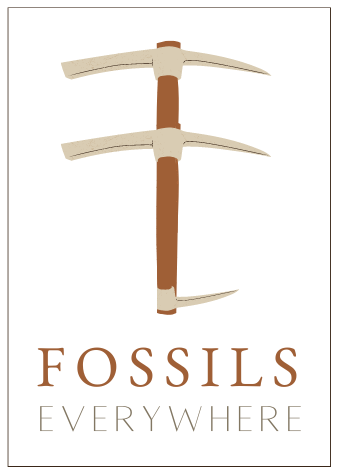A fossil is the preserved remains or traces of an organism that lived in the past. There are three main types of fossils: casts, molds, and petrifaction. Each type of fossil forms in a different way.
Casts
A cast is formed when an animal dies and its body decays, leaving a cavity in the shape of the animal. Mineral-rich water flows into the cavity, Hardens, and replaces the original tissue. The hole left behind by the dead animal is called an external mold. When the hardening process is complete, you are left with a casting of the animal’s shape.

An internal mold forms when dissolved minerals fill in the cavities inside the animal’s body. As with an external mold, an internal mold will also leave an empty space that has the shape of the original animal .Both external and internal molds can be used to create casts. Dinosaur bones are often found as fossils because their hard bones resist decay longer than soft tissues like skin and muscle. Fossilized skin and muscles are very rare because they decay quickly after death.
Mold
A mold is created when an animal dies and its body decays, leaving behind a hollow space in the shape of the animal. Mold can also form on an object that was never alive, like a footprint left in soft mud that later dries and hardens.

When mineral-rich water seeps into the hollow space, it deposits minerals that harden .As more minerals are deposited, the mold becomes thinner and more fragile. The final product is a thin impression or negative image of the original object. If a fossil is found that has both a cast and a mold, it is called a steinkern. A steinkern occurs when part of the original object is dissolved away before it can be replaced by minerals. This leaves behind a negative impression or “stencil” of what was there before. Many molds are found in sedimentary rock ,but they can also be found in metamorphic and igneous rock. Body fossils preserved as molds are less common than those preserved as casts because they require special conditions to form. Molds can form when animals or objects are buried quickly by sediment, which protects them from being dissolved by groundwater before minerals have time to precipitate. Alternatively, molds can form when animals or objects are buried in environments with little or no groundwater flow, such as under glaciers or in deserts. Lack of water limits decomposition and thus increases the chance that a mold will form .Molds can also form in cavities inside rocks if conditions inside the rock prevent dissolution of the original material.
Petrifaction
Petrifaction is similar to casts and molds, but instead of being filled with minerals, the organic materials are replaced molecule by molecule with silica, calcite, pyrite, or another inorganic substance.

Petrified wood is probably one of the most well-known examples of petrifaction. It forms when trees fall into bogs or rivers, where they are quickly covered by sediment that limits oxygen exposure and thus decomposition. As groundwater flows through sediment, it carries dissolved minerals that precipitate and replace plant material molecule by molecule until a replica of the original tree is formed in stone. Other common examples of petrifaction include fossilized coral, slime molds, insects, and fish. Like molds, petrified fossils can be found in all three types of rock—sedimentary, metamorphic,and igneous —though they are most common in sedimentary rocks. Because petrification requires specific conditions to occur, fossils preserved by petrifaction are less common than those preserved by cast formation or permineralization.
Fossils come in many shapes and sizes, but all fossils have one thing in common: they offer us a glimpse into Earth’s distant past. Fossils allow us to study long-extinct organisms and learn about ancient ecosystems. There are three main types of fossils: casts, molds, and petrifications. Each type of fossil forms in a different way under different conditions. However, all three types of fossils give us important information about prehistoric life on Earth.
